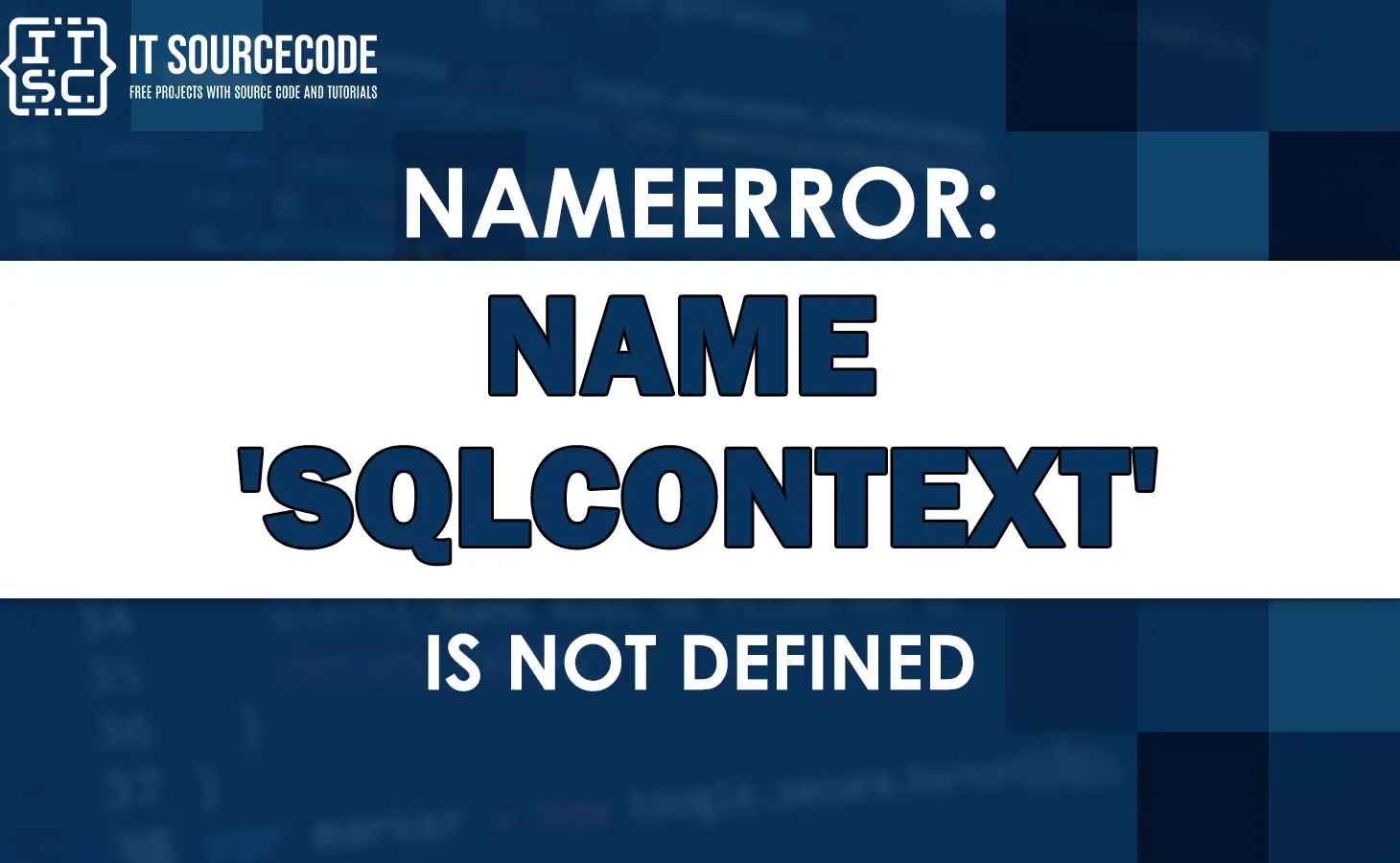The nameerror: name ‘sqlcontext’ is not defined is a common error encountered by Python developers, particularly when working with libraries like Apache Spark.
In this article, we’ll explore the solutions to fix the name ‘sqlcontext’ is not defined.
Apart from that, we’ll also discuss what this error means and why it occurs.
So with any explanations, let’s get started!
What is “sqlcontext”?
The “sqlcontext” refers to a variable or object commonly used in the context of Apache Spark. It is a powerful open-source framework for distributed data processing.
In addition to that, “sqlcontext” is an entry point for executing SQL queries and performing data analysis using the SQL language in Spark.
What is “nameerror name ‘sqlcontext’ is not defined”?
The nameerror: name ‘sqlcontext’ is not defined occurs when you are trying to use the variable or object “sqlcontext” in your code without importing it first or initializing it properly.
This error message indicates that the Python interpreter do not recognize the “sqlcontext” as a defined variable or object.
Why does the “name ‘sqlcontext’ is not defined” occur?
This error occurs because of several reasons, such as:
❌ If the required module or library that supports the “sqlcontext” variable is not imported.
❌ Typos or misspelled variable name can cause this error message.
❌ When the “sqlcontext” variable is defined, within a specific scope and you are trying to access it outside that scope a nameerror occurs.
How to fix the “nameerror: name ‘sqlcontext’ is not defined”?
To fix the nameerror name ‘sqlcontext’ is not defined error message, ensure that you have imported and initialized sqlcontext properly in your code.
Here are the following solutions that help you to resolve the error right away:
Solution 1: Import the required module
Ensure you imported the required module that defines the “sqlcontext” variable. In the case of Apache Spark, the module that usually used is pyspark.sql.
✅ from pyspark.sql import SQLContextBy importing the sqlcontext class from the pyspark.sql module, by doing so, you can access the “sqlcontext” variable and perform SQL operations on your Spark DataFrame.
Solution 2: Importing and initializing “sqlcontext” in Spark version 1
If you are using Apache Spark version 1, you can fix this error by importing sqlcontext and initializing it with a SparkContext object.
For example:
✅ from pyspark import SparkContext
from pyspark.sql import SQLContext
sc = SparkContext("local", "Sample")
sqlContext = SQLContext(sc)
Solution 3: Using SparkSession in Spark version 2
If you are using Apache Spark version 2 or recently, you can fix this error by using SparkSession instead of “sqlcontext.”
For example:
✅ from pyspark.sql import SparkSession
spark = SparkSession.builder.appName("Sample").getOrCreate()
On the other hand, you can directly use the SparkSession object for SQL operations without explicitly creating an instance of SQLContext.
✅ from pyspark.sql import SparkSession
# Create SparkSession
spark = SparkSession.builder.getOrCreate()
# Execute SQL query
results = spark.sql("SELECT * FROM my_table")
# Rest of your code here
The SparkSession object provides built-in SQL capabilities, allowing you to execute SQL queries directly using the sql() method. This eliminates the need for the “sqlcontext” variable while still enabling SQL operations.
Additional solutions for “nameerror: name ‘sqlcontext’ is not defined”
✅ Ensure that you have spelled sqlcontext correctly in your code. Python is case-sensitive, so sqlcontext, SQLContext, and SqlContext are all treated as different names.
✅ Ensure that you have imported and initialized “sqlcontext” before using it in your code.
✅ Ensure that you have installed all the necessary dependencies for using PySpark and that they are up-to-date.
Conclusion
In conclusion, the error message nameerror: name ‘sqlcontext’ is not defined occurs when you are trying to use the variable or object “sqlcontext” in your code without importing it first or initializing it properly.
This article discusses what this error is all about and already provides different solutions to help you fix this error.
You could also check out other “nameerror” articles that may help you in the future if you encounter them.
- Nameerror: name ‘open’ is not defined
- Nameerror: name ‘kwargs’ is not defined
- Nameerror: name ‘display’ is not defined
We are hoping that this article helps you fix the error. Thank you for reading itsourcecoders 😊

